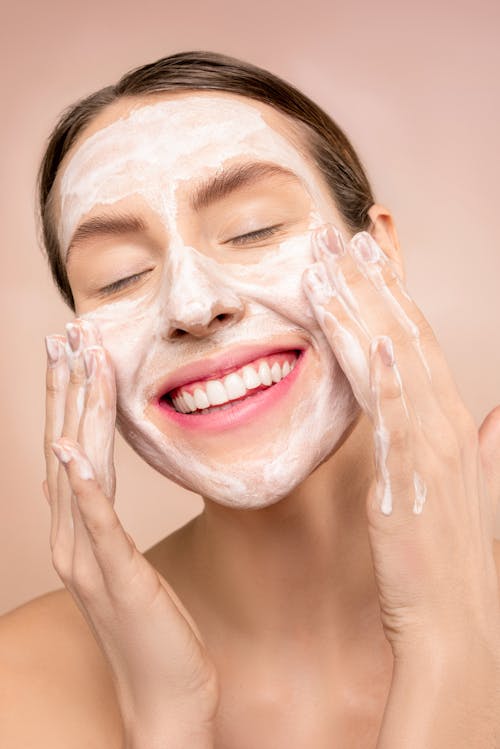When you start focusing on your skincare journey, there are two things you primarily focus on –
Number 1 – Knowing your skin type!
Number 2 – Accessing the skincare products you use for your particular skin type.
Learning about your skin is very essential in order to pamper it the right way. Sometimes, we may worsen our already healthy skin due to limited knowledge. So, we have curated this blog series that helps you find out your skin type at home and once you know what your skin type is we have dedicated blogs as guides to take care of them. We hope you browse through them and ace your skincare game.
As for this blog, we will discuss the combination skin type. This skin can be tricky to handle and may take a little bit more effort than others but we must embrace our skin as it is. But before we begin, let’s decode what combination skin type is.

It is what the name denotes. This type of skin is both oily and dry in some areas. It is common for people with a Combination skin type to experience oily T-zone and dry cheek areas.
WHAT CAUSES A COMBINATION SKIN TYPE?
As with other skin types, even this is genetic. Nothing actually causes it, but yes it is seasonal and hormonal. Additionally, it can get worse if not tended to properly.
SIGNS OF COMBINATION SKIN
1. Shiny T-zone
2. Enlarged pores
3. Flaky skin patches
4. Forehead and nose acne
5. Redness
6. Rougher skin patches.
NOW, LET’S GET DOWN COMBINATION SKINCARE ROUTINE
SUGGESTED A.M. ROUTINE FOR COMBINATION SKIN – FOLLOW USING YOUR SKINCARE PRODUCTS IN THIS ORDER TO HELP THEM SERVE YOUR COMBINATION SKIN BETTER.
- Use a foaming cleanser/facewash, preferably organic to eliminate all the buildup that must have occurred during the night.
- Next step – TONER. This will help you get rid of excess oil and dirt that is settled deep in your pores that the cleanser might miss out on sometimes. It also balances your skin’s pH levels. Also, make sure to use an alcohol-free toner
- Serums are next. They help your skin indulge in hydration while repairing the damage the external stressors put it through.
- Next up is Moisturizer. Opt for gentle water-based moisturisers and make sure you frequently moisturize your dry areas. Water-based moisturisers not only hydrate your skin but also avoid creating excessive oiliness.
- Last but not least, some good lightweight sunscreen with at least SPF 50.
SUGGESTED A.M. ROUTINE FOR COMBINATION SKIN IN THE RIGHT ORDER
- Start by removing any heavy makeup off your face with a gentle makeup remover and a cotton pad. Micellar water is suitable for all skin types. This way you help your skin breathe.

- Follow up with a foaming cleanser to get rid of excessive oil buildup and is a great way to remove residual make-up.
- Next step – EXFOLIATION. As a combination skin type, you must use gentle yet effective cleansers once a week. Dead skin cells have to go to reveal your natural skin complexion as well as soothe your dry areas.
- If you have a combination skin type, we suggest you multi-mask. Use two different face masks to cater to different situations of your face – i.e. dry and oily.
Extra Tips
- An emollient-rich moisturizer is great for dry areas.
- Target your skincare products on specific problem areas – Since your T-zone is oily, use acids only on your T-zone. But only at night.
- For acne problems, you can use skincare products that contain salicylic acid. It regulates oil production from your skin pores and unclogs pores.
- Use antioxidants to help you protect from environmental damage.
- Vitamin C is another great product for your combination skin.
- When it comes to make-up, try using a mineral-based foundation. This will restrict oil to form on your T-zone. If you can’t distinguish one, simply search for foundations suitable for combination skin.
- It is always best to consult an expert when it comes to your skin. Go see a dermatologist or get a referral from your family doctor for a dermatologist.
- Ask them for product recommendations as well as getting to know your skin better.
- There are advanced treatment options available right now like chemical peels, laser treatments, topical creams and ointments, etc. that might soothe your aggravated conditions.
- Ask about topical medications such as – Retinoids, Dapsone (Aczone), Antibiotics, etc.
Conclusion
Apart from the blogs already available on our page, if you wish to hear us discuss our views on specific skincare topics, feel free to write back in the comment section below.


